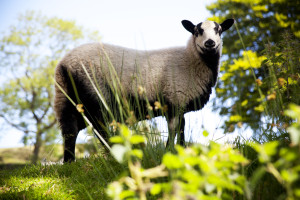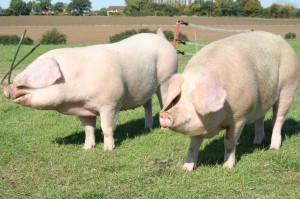As part of Slow Food UK Week’s celebrations, six ‘forgotten foods’ from Britain are being showcased in a bid to revive them.

Badger Face Welsh Mountain Sheep, Cornish Saffron Cake, British Lop Pig, Sea Lavender Honey, Goosnargh Cake, and the Medlar have all been added to the Slow Food UK’s Ark of Taste, which champions artisan food producers, traditional preparation methods and ‘endangered’ foods. The Ark of Taste aims to raise awareness about the products so that they may be rediscovered and returned to the market.
“It’s a question of eat it, or lose it,” says Catherine Gazzoli, CEO of Slow Food UK, a non-profit organisation the aim of which is to promote nutritious, locally-sourced foods, with the first week of June in Britain dedicated to the cause. “By raising awareness of our ‘forgotten foods’, we’re working towards enhancing the wonderful biodiversity that is our edible birthright.”

The addition of these six unusual edibles brings the Slow Food UK’s Ark of Taste to a total of 61 foods but what, you may well ask, are they?
Badger Face Welsh Mountain Sheep: Believed to be among the very first native sheep in Wales, these creatures have black ears and distinctive black stripes above their eyes and around their chins. The Badger Faces are bred in small numbers and produce milk and fine-textured, succulent meat.

Cornish Saffron Cake: These oblong, loaf-shaped cakes have an average weight of around 500g. Cornish Saffron Cake is characterized by a deep golden crust and contains dried fruits and saffron, which was widely used in British cookery in the 15th and early 16th centuries, but went into decline as other spices were introduced in the country. However, Cornwall continued to grow the spice on a small scale with the Cornish Saffron Cake a local speciality, made in a number of traditional local bakeries throughout the county.
British Lop Pig: These white pigs are a native breed of the West Country, specifically in Tavistock, which marks a border between Cornwall and Devon.
Only 2,000 British Lops are born each year, compared to the large white hybrid pig, of which 5,000 are born annually. This is because the hybrids grow quicker and offer a better return for farmers, despite the Lops producing excellent quality lean meat.
Sea Lavender Honey: Growing on mudflats around the coast of England and parts of southern Scotland, sea lavender produces a mild, pale-yellow honey that granulates rapidly. In Norfolk it is a dominant species: East Anglian beekeepers have collected this honey for centuries.

Goosnargh Cake: Similar to shortbread, the Goosnargh Cake is a circular biscuit of 80mm diameter which is 10mm deep and weighs around 50g. It has a buttery texture and tastes of caraway seeds.
Goosnargh is a village in the north of Preston in Lancashire where the cakes were popular in the 16th and 17th centuries when whole caraway seeds were a common ingredient in the biscuit and cake recipes. These cakes were connected with Catholicism, which remained dominant in the area long after it had vanished in other parts of the country. However, producing them required large quantities of butter which was rationed during the war; this saw Goosnargh Cakes start to decline.
The Medlar: A small fruit with a diameter of up to 5cm, the Medlar is shaped rather like an apple and grow predominantly in the south east of England. When ripe, it is a dull purple colour with a grainy texture and a combination of sweet and sour taste. The Medlar was thought to have been brought over by the Romans but was particularly popular in Victorian England as an accompaniment to port wine.
Slow Food Week UK runs from 1-9 June with a host of events throughout the UK, including special menus at ‘Chef Alliance’ restaurants. For more information click here.





 © 2024
© 2024